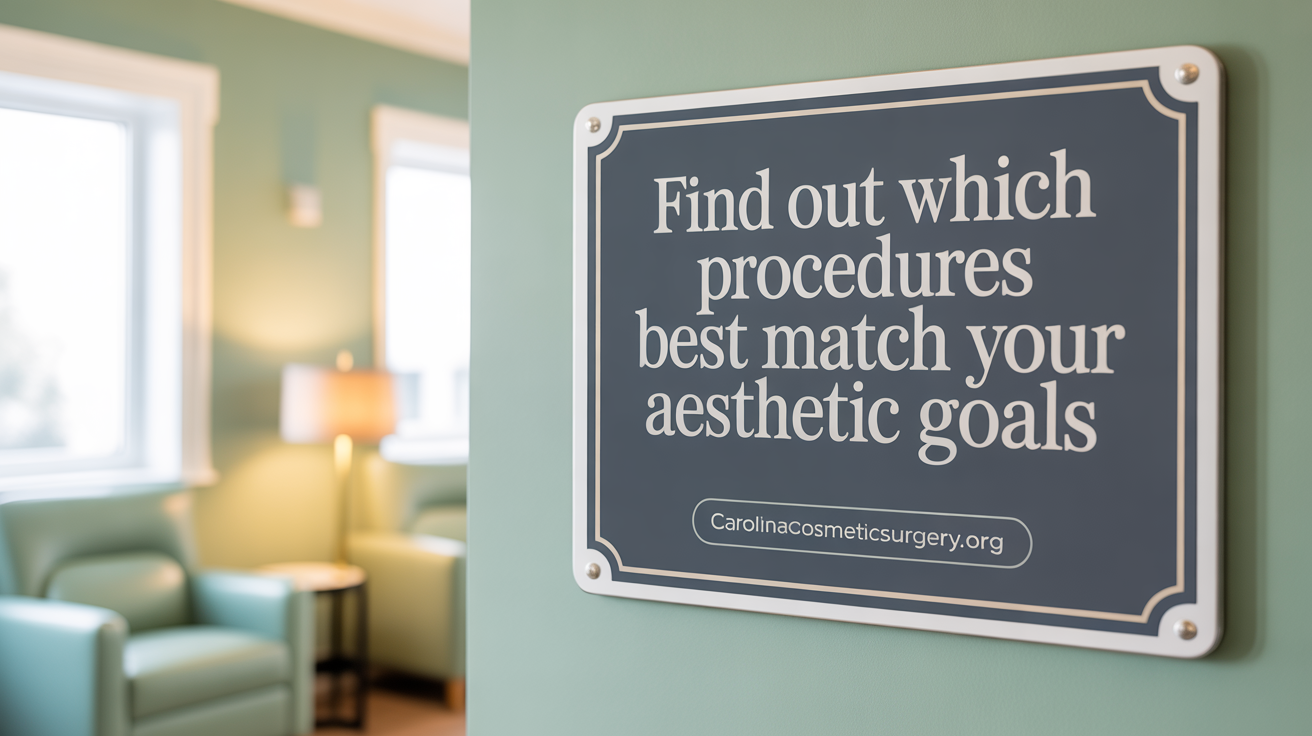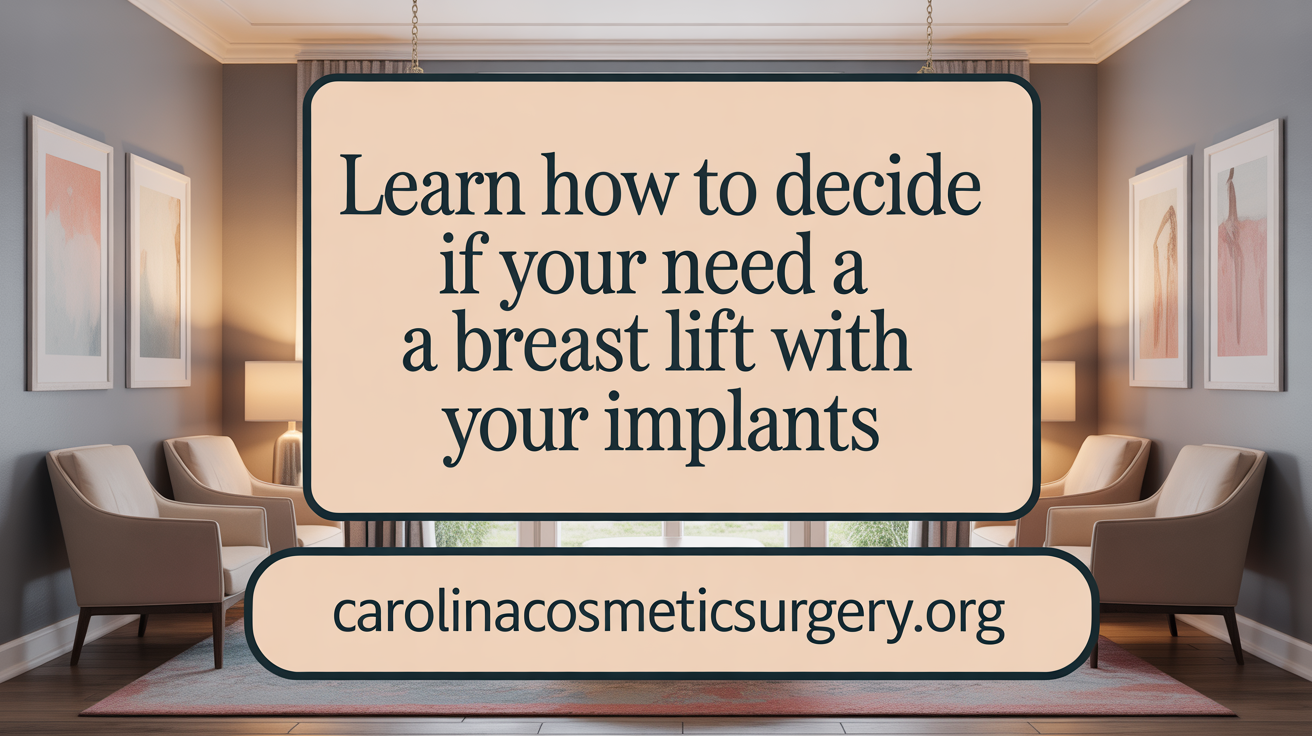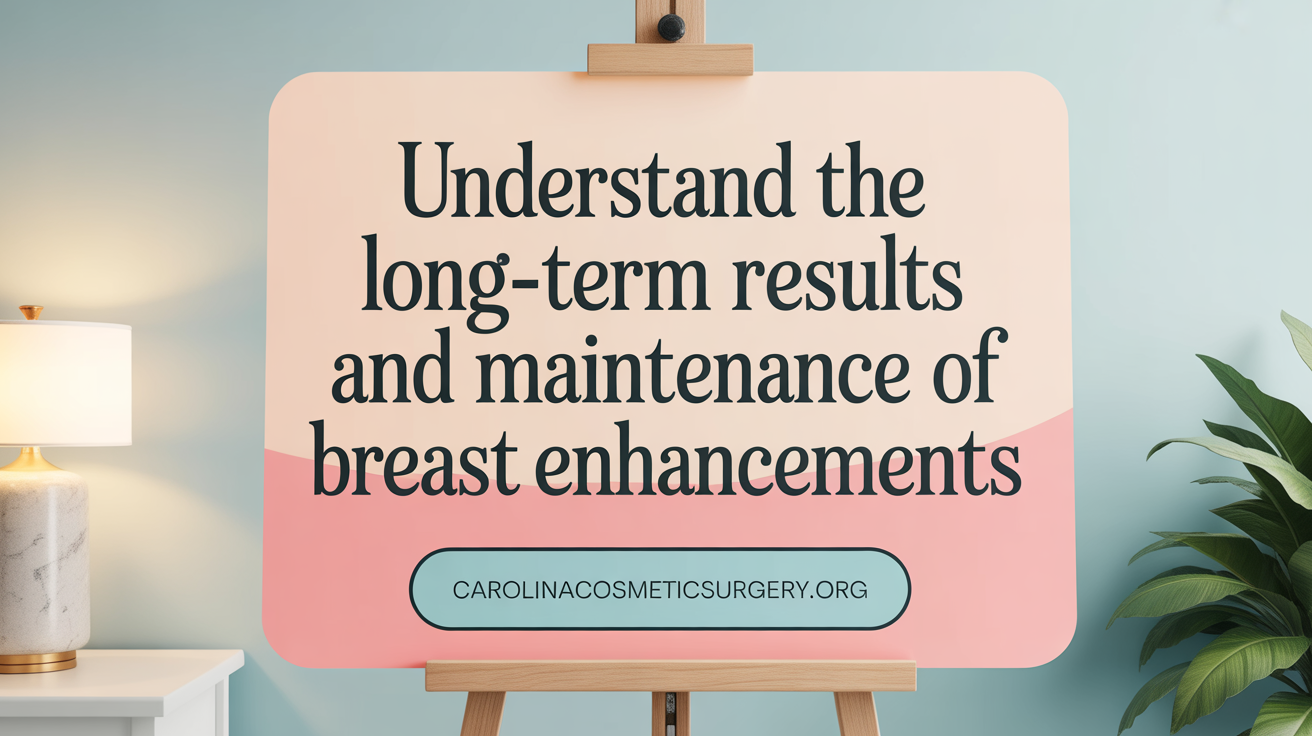Understanding Breast Enhancement: What You Need to Know
Breast enhancement surgeries are among the most popular cosmetic procedures globally, tailored to meet diverse aesthetic and functional needs. Whether you are considering augmentation to increase volume, a lift to address sagging, or reduction to alleviate discomfort from overly large breasts, understanding the differences, benefits, and limitations of each option is essential. This comprehensive guide will walk you through augmentation, lifts, reductions, natural enhancements, and combined approaches to help you make an informed decision aligned with your personal goals and anatomy.
Breast Enhancement Procedures: Types and Purposes

What are the different types of breast enhancement procedures and their purposes?
Breast enhancement procedures encompass various surgical and non-surgical options designed to improve the size, shape, and position of the breasts. Each serves specific aesthetic or functional goals, tailored to individual needs.
Breast augmentation is primarily aimed at increasing breast size and improving shape. It involves placing implants—either saline, silicone, or gummy bear (form-stable silicone)—through incisions made in inconspicuous areas such as under the breast (inframammary), around the nipple (periareolar), or in the armpit (transaxillary). Implants can be round or shaped (teardrop), and positioned either under the breast tissue (subglandular) or beneath the chest muscle (submuscular). The procedure enhances fullness, corrects asymmetry, and can restore volume lost after pregnancy or weight loss.
Breast lift (mastopexy) aims to raise and reshape sagging breasts, creating a more youthful and firm appearance. There are various techniques—crescent, peri-areolar, vertical (lollipop), and anchor (inverted T)—chosen based on the severity of sagging. This procedure removes excess skin, repositions the nipple, and tightens surrounding tissue without significantly altering breast size.
Breast reduction involves removing excess fat, tissue, and skin to decrease breast size. This not only improves appearance but also alleviates physical discomfort caused by large, heavy breasts, such as shoulder pain, skin irritation, and posture problems.
Natural breast augmentation using fat transfer offers a more subtle enhancement by harvesting fat from the patient's own body (abdomen, thighs) through liposuction and injecting it into the breasts. This method provides a natural look and feel and avoids synthetic implants, but typically induces modest size increases and requires multiple sessions.
Combined procedures—such as simultaneous lift and augmentation—address both sagging and volume loss, providing a comprehensive approach to breast rejuvenation. The best procedure depends on individual goals, anatomy, and surgeon advice.
In summary, whether increasing size, lifting sagging tissue, reducing excessive volume, or combining these goals, patients can choose from a variety of procedures tailored to their personal desires and physical characteristics to achieve optimal aesthetic results.
Choosing the Right Procedure: Lift, Reduction, or Augmentation?

How can I determine whether a breast lift, breast reduction, or augmentation is suitable for my needs?
Deciding on the appropriate breast procedure depends on your unique goals and physical traits. To assess which surgery may be right for you, consider your desires:
- If you are satisfied with your current breast size but want to correct sagging or drooping, a breast lift or mastopexy might be the best choice. This procedure repositions and reshapes existing tissue for a perkier appearance without adding volume.
- For those experiencing physical discomfort caused by overly large breasts, such as shoulder pain, skin irritation, or postural problems, a breast reduction or reduction mammaplasty can decrease size and alleviate symptoms effectively.
- If your primary goal is to increase breast volume, enhance shape, or improve silhouette, breast augmentation with implants or fat transfer is recommended. This is suitable for women who want fuller breasts or to correct size asymmetry.
- In cases where sagging accompanies small or asymmetrical breasts, a combination of augmentation and lift might be needed to restore shape and size simultaneously.
Ultimately, consultation with a qualified plastic surgeon is crucial. They will assess your body, discuss your goals, and recommend the most suitable procedure(s) based on your physical condition, skin quality, and desired outcomes.
Criteria for breast lift vs augmentation vs reduction
| Procedure | Best for | Main Goal | Typical Candidates | Common Techniques | Range of Costs |
|---|---|---|---|---|---|
| Breast lift (mastopexy) | Sagging breasts | Repositioning and lifting breasts | Women with drooping breasts due to aging, pregnancy or weight loss | Crescent, periareolar, vertical, or anchor lifts | £5,950 and up |
| Breast reduction | Overly large, heavy breasts | Remove excess tissue and alleviate discomfort | Women experiencing physical and emotional issues caused by large breasts | Liposuction, tissue removal, skin tightening | Between $9,500 and $10,000 |
| Breast augmentation | Small or asymmetrical breasts | Increase size and improve shape | Women wanting larger, fuller, or more proportionate breasts | Silicone or saline implants, fat transfer | Starting around £4,250 |
Understanding the options
| Procedure | Involvement | Effect | Suitability | Incision Sites | Lasts |
|---|---|---|---|---|---|
| Lift | Removes excess skin | Reshapes and raises breasts | Good for sagging, drooping nipples | Periareolar, lollipop, anchor | 10+ years with proper care |
| Reduction | Removes tissue and skin | Decreases size and symptoms | Large breasts causing discomfort | Incision around nipple or chest | Permanent, with possible secondary surgery |
| Augmentation | Inserts implants or fat | Enhances volume and contour | Small or asymmetric breasts | Under breast fold, near armpit, around areola | 10-15 years, may require replacement |
Choosing the right procedure often involves understanding how each option can help you meet your personal goals. A tailored plan crafted by a board-certified surgeon ensures you get the best results aligned with your expectations.
Breast Augmentation Explained: Implants and Natural Options
What is the difference between breast augmentation and implants?
Breast augmentation is a broad term that covers any surgical procedure aimed at enhancing the size, shape, or volume of the breasts. This can be achieved using different techniques such as implants or fat transfer.
Whereas, breast implants specifically refer to the surgical placement of silicone or saline devices to increase breast size and improve contour. Implants come in various types and shapes, providing predictable results for those seeking a significant size increase.
In addition to implants, some women opt for natural augmentation, which uses their own body fat to add volume. This option offers a subtler, more natural look and feel without synthetic materials.
In summary, while all implant procedures fall under breast augmentation, not all augmentation involves implants. Fat transfer is an alternative method within this category, primarily chosen for natural enhancement.
Recovery and Costs: What to Expect After Breast Surgery

How does the recovery process compare between a breast lift and breast implant surgery?
Recovery timelines for breast lift and implant surgeries are generally similar, but there are some differences. After a breast lift, patients commonly experience soreness, swelling, and incisions around the nipple and beneath the breast. Most women can resume light activities within one to two weeks.
In contrast, breast implant recovery involves managing swelling, bruising, and soreness around the implant area. Patients typically return to normal routines within a week, but full healing may take 4 to 6 weeks.
Both procedures require avoiding strenuous activities and heavy lifting for several weeks to promote healing. The extent of tissue removal or implant placement, and whether these procedures are combined with others, can influence individual recovery experiences.
Overall, while recovery times are comparable, individual responses vary based on surgery specifics and personal health.
What are the typical costs associated with breast lifts compared to breast implants?
Breast lifts tend to be more expensive, with costs generally ranging from $9,000 to $16,000. This reflects the procedure’s complexity, involving removing excess skin, reshaping tissue, and repositioning the nipple.
In comparison, breast implant surgery costs usually fall between $6,000 and $12,000. The price varies based on implant type, size, and surgical technique.
The higher cost of a lift is driven by the longer operative time and the skill required to achieve a natural and durable result.
It’s important to note that these prices include surgeon fees, anesthesia, and facility charges. Consulting with a qualified plastic surgeon will help clarify exact costs tailored to individual needs.
| Procedure | Typical Cost Range | Factors Influencing Cost |
|---|---|---|
| Breast Lift | $9,000 - $16,000 | Extent of sagging, technique used, complexity of reshaping |
| Breast Implant Surgery | $6,000 - $12,000 | Implant type, size, placement, and surgical approach |
Both options are worthwhile investments in self-confidence and body image, depending on personal goals and anatomy.
Determining When a Lift Is Needed Alongside Implants

What factors help determine if breast implants alone are sufficient or if a breast lift is also necessary?
Deciding between using only breast implants or combining them with a lift depends on several important factors. The most critical are the level of breast sagging, skin quality, and nipple position.
Women who have minimal sagging and retain good skin elasticity often find that implants alone can enhance their breast size and shape effectively. In such cases, the skin is still firm enough to support the increased volume without additional reshaping.
However, if there is significant sagging—known medically as ptosis—or the nipples point downward and sit below the breast crease, implants alone may not be enough. Loose, stretched skin and a downward nipple position often require a breast lift. This procedure removes excess skin, tightens the remaining tissue, and repositions the nipple higher on the chest for a more youthful appearance.
In cases of moderate sagging, a combined approach—often called augmentation-mastopexy—can address both issues in a single surgery. This combines the volume enhancement of implants with the lifting effect of removing excess skin.
Ultimately, a consultation with a qualified plastic surgeon is vital. They will evaluate your breast anatomy, skin quality, and aesthetic goals to recommend the best surgical plan tailored to your needs. This personalized assessment helps ensure optimal, natural-looking results and satisfaction.
Long-Term Outcomes and Considerations for Breast Enhancement

How do breast enhancement procedures affect long-term outcomes such as aesthetic results and potential complications?
Breast enhancement surgeries can offer lasting aesthetic improvements, but their long-term success depends on the specific procedure and individual factors. For instance, breast lifts (mastopexy) tend to produce durable results, restoring a youthful shape, but do not prevent natural aging, skin laxity, or gravity from affecting the breasts over time.
On the other hand, implant-based procedures, including augmentation with silicone or saline implants, often require revision or replacement after about 10-15 years due to risks like capsular contracture — a condition where scar tissue tightens around the implant. Textured implants have been associated with a rare risk of BIA-ALCL, a form of lymphoma, which underscores the importance of choosing the appropriate implant type and maintaining regular monitoring.
Implant-related complications such as rupture, rippling, or displacement can impact both the appearance and health. Silicone gel implants may rupture without immediate symptoms but can be detected via imaging, while saline leakages are typically noticeable due to changes in breast size.
Potential issues like seromas, infections, or discomfort may also occur and sometimes necessitate further surgery. Despite these risks, advances in surgical techniques and implant technology have improved long-term safety profiles.
What is the lifespan of implants and how should they be maintained?
Most breast implants are designed to last between 10 and 20 years, but this can vary widely depending on individual usage, health, and implant type. Regular follow-up visits with a qualified surgeon are essential for monitoring implant condition through physical exams and imaging studies, such as MRIs or ultrasound, especially for silicone implants.
During these visits, the physician can detect silent ruptures or other issues early, allowing for timely intervention. Patients are advised to report any unusual symptoms, including persistent pain, swelling, capsular contracture signs, or changes in breast shape.
Further, lifestyle choices can influence the longevity of breast implants. Maintaining a stable weight, avoiding smoking, and following post-operative care guidelines all contribute to better long-term outcomes.
How do aging and lifestyle impact the durability and appearance of breast enhancements?
As women age, natural changes in skin elasticity, gravity, and tissue support can diminish the results of prior breast enhancement procedures. Pregnancy, significant weight fluctuations, and hormonal changes also impact the shape and firmness of the breasts.
Lifestyle factors, such as smoking, poor diet, and inadequate skin care, can accelerate skin laxity and reduce the durability of surgical outcomes. Wearing supportive bras, practicing good skin health, and avoiding smoking are all recommended to help maintain the results.
While surgical procedures can significantly improve appearance and self-confidence, understanding that natural aging processes will continue is key to managing expectations. Planning for potential future procedures, like lifts or replacements, may be necessary to sustain the desired aesthetic over the years.
| Aspect | Long-term Outlook | Considerations |
|---|---|---|
| Implant lifespan | 10-20 years | Regular monitoring required |
| Risks | Capsular contracture, rupture, ALCL | Choosing appropriate implant types and surgeon expertise |
| Monitoring | Imaging and physical exams | Detect silent ruptures early |
| Aging impact | Skin laxity, gravity | Lifestyle, support, and possible future procedures |
| Lifestyle influence | Weight changes, smoking, nutrition | Supportive wear, skin care, healthy habits |
Ultimately, long-term success with breast enhancement procedures depends on careful planning, choosing experienced surgeons, and maintaining regular follow-up care to address any issues promptly.
Making the Right Choice for Your Breast Enhancement Journey
Choosing the appropriate breast enhancement procedure is a deeply personal decision that hinges on your unique anatomy, aesthetic desires, and lifestyle considerations. Whether opting for augmentation, lift, reduction, or a combination, understanding the purposes, benefits, recovery, and potential risks empowers you to approach surgery with confidence. Collaborating closely with a board-certified plastic surgeon ensures that your goals and health are thoroughly evaluated, leading to a tailored plan that delivers natural, lasting results and improved well-being. With informed decisions and professional care, breast enhancement can be a transformative step toward greater self-esteem and body harmony.
References
- Choosing the Perfect Breast Procedure: Augmentation, Lift, or ...
- Which Breast Enhancement Technique Is Right for Me?
- Breast Augmentation (Breast Implants) Guide
- Breast Lift vs. Implants: Which Procedure is Right For Me?
- Breast Augmentation 101: A Comprehensive Guide to ...
- Breast Augmentation vs. Breast Lift: Which Procedure is Best for You?
- Large Breast Concerns? Your Guide to Augmentation, Reduction ...
